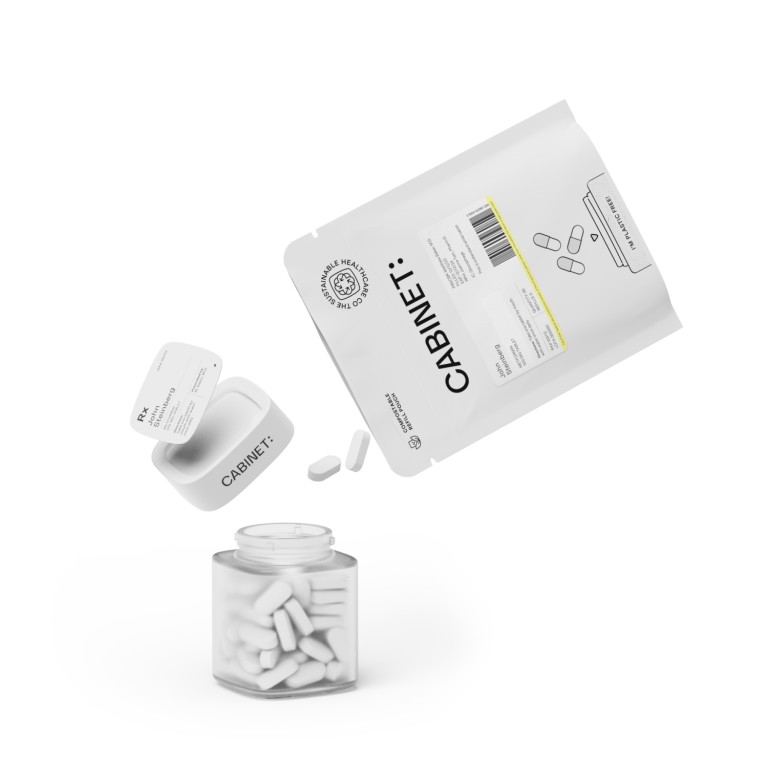Paroxetine and Sertraline are two commonly prescribed medications for the treatment of various mental health conditions. Understanding the differences between these drugs, including their efficacy and potential side effects, is crucial for both healthcare providers and patients. In this article, we will delve into the key aspects of Paroxetine and Sertraline to help you make an informed decision about which medication might be the best fit for your needs.
Understanding Paroxetine and Sertraline
Both Paroxetine and Sertraline belong to a class of medications called selective serotonin reuptake inhibitors (SSRIs). Paroxetine is primarily used to treat conditions such as depression, generalized anxiety disorder, and panic disorder. It works by increasing the level of serotonin, a neurotransmitter responsible for regulating mood, in the brain.
Sertraline, on the other hand, is commonly prescribed for depression, obsessive-compulsive disorder, social anxiety disorder, and post-traumatic stress disorder. It also works by boosting serotonin levels in the brain, which helps alleviate symptoms of these conditions.
The Role of Paroxetine in Mental Health Treatment
Paroxetine has been extensively studied and has shown significant efficacy in the treatment of various mental health disorders. It has proven particularly effective in managing symptoms of depression, including low mood, loss of interest, and feelings of worthlessness. Paroxetine can also help reduce symptoms of anxiety, such as excessive worrying and restlessness.
Furthermore, Paroxetine has been found to be effective in the treatment of panic disorder, which is characterized by recurrent panic attacks and feelings of impending doom. It helps alleviate the intensity and frequency of panic attacks, allowing individuals to regain control over their lives.
In addition to its primary uses, Paroxetine has also shown promise in the treatment of other conditions. Research suggests that it may be beneficial in managing symptoms of premenstrual dysphoric disorder (PMDD), a severe form of premenstrual syndrome (PMS) that affects a significant number of women. Paroxetine can help reduce the emotional and physical symptoms associated with PMDD, providing relief and improving overall quality of life.
Moreover, Paroxetine has been investigated for its potential in the treatment of post-traumatic stress disorder (PTSD). While it is not the first-line treatment for this condition, studies have shown that Paroxetine can be effective in reducing the severity of PTSD symptoms, such as intrusive thoughts, hyperarousal, and avoidance behaviors. It may be used as an adjunct to therapy in individuals with PTSD, helping to enhance the therapeutic outcomes.
The Role of Sertraline in Mental Health Treatment
Sertraline, like Paroxetine, has demonstrated remarkable efficacy in treating mental health conditions. It is often prescribed for depression, helping to improve mood, increase energy levels, and restore balance in individuals experiencing depressive symptoms. Sertraline has also proven beneficial for managing symptoms of anxiety disorders, including obsessive-compulsive disorder and social anxiety disorder.
In addition, Sertraline has been found to be effective in the treatment of post-traumatic stress disorder. It helps individuals process traumatic experiences and reduces the intensity of related symptoms, such as nightmares, flashbacks, and hypervigilance.
Furthermore, Sertraline has shown promise in the treatment of other conditions beyond depression and anxiety disorders. Research suggests that it may be beneficial in managing symptoms of premenstrual dysphoric disorder (PMDD), similar to Paroxetine. By modulating serotonin levels, Sertraline can help alleviate the emotional and physical symptoms associated with PMDD, providing relief to women who experience severe premenstrual symptoms.
Moreover, Sertraline has been investigated for its potential in the treatment of eating disorders, such as bulimia nervosa. It has been found to reduce binge-eating episodes and help individuals regain control over their eating behaviors. Sertraline may be used as part of a comprehensive treatment plan that includes therapy and nutritional counseling for individuals struggling with eating disorders.
In conclusion, both Paroxetine and Sertraline are valuable medications in the treatment of various mental health conditions. They work by increasing serotonin levels in the brain, which helps regulate mood and alleviate symptoms of depression, anxiety, and other related disorders. While they have their primary uses, ongoing research suggests that they may have additional benefits in managing other conditions, such as premenstrual dysphoric disorder and eating disorders. It is important to consult with a healthcare professional to determine the most appropriate medication and treatment plan for individual needs.
Delving into the Efficacy of Both Drugs
Evaluating the effectiveness of Paroxetine and Sertraline is crucial when deciding which medication is most suitable for a patient's needs. Both drugs have been extensively studied and have shown significant efficacy in treating various mental health conditions.
Evaluating the Effectiveness of Paroxetine
Multiple clinical trials and research studies have provided strong evidence supporting the effectiveness of Paroxetine in treating depression, panic disorder, and generalized anxiety disorder. It has been shown to significantly reduce symptoms in patients with these conditions and improve overall well-being. Moreover, Paroxetine is often well-tolerated, with minimal adverse effects.
Assessing the Success Rate of Sertraline
Like Paroxetine, Sertraline has been extensively evaluated for its effectiveness in treating depression, obsessive-compulsive disorder, social anxiety disorder, and post-traumatic stress disorder. Clinical trials have consistently demonstrated that Sertraline can alleviate symptoms, improve quality of life, and enhance overall functioning in individuals with these conditions. Additionally, Sertraline is generally well-tolerated, with adverse effects typically being mild and transient.
Side Effects: A Comprehensive Review
While Paroxetine and Sertraline are generally well-tolerated, it is crucial to be aware of their potential side effects. Understanding these risks helps healthcare providers and patients make informed decisions and monitor for any adverse reactions.
Common and Uncommon Side Effects of Paroxetine
Common side effects of Paroxetine include nausea, dizziness, drowsiness, dry mouth, and sexual dysfunction. These effects are often temporary and subside with continued use. However, it is important to note that Paroxetine can also cause more severe side effects, such as suicidal thoughts or behavior in some individuals, especially when initiating or discontinuing treatment. Healthcare providers closely monitor patients for any changes in behavior or emotional state.
Potential Side Effects of Sertraline
Sertraline shares many common side effects with Paroxetine, including nausea, diarrhea, insomnia, and sexual dysfunction. Like Paroxetine, Sertraline can also increase the risk of suicidal thoughts or behavior in certain individuals, particularly at the start of treatment or when dosage adjustments are made. Close monitoring is essential to ensure the safety and well-being of patients.
Drug Interactions and Precautions
Both Paroxetine and Sertraline can interact with other medications, potentially leading to adverse effects or reduced efficacy. It is crucial to understand these interactions and take necessary precautions to ensure treatment safety.
Interactions to Be Aware of with Paroxetine
Paroxetine can interact with other medications, such as certain antidepressants, anti-seizure drugs, and blood thinners. These interactions could lead to serious side effects or reduce the effectiveness of either medication. Healthcare providers carefully review a patient's medication profile and medical history to identify potential interactions before prescribing Paroxetine.
Precautions When Using Sertraline
Sertraline has potential interactions with specific medications, including monoamine oxidase inhibitors (MAOIs), blood thinners, and antiplatelet drugs. It is essential to inform healthcare providers about all medications, supplements, and herbal products being taken to avoid any adverse interactions. Moreover, caution should be exercised in individuals with a history of bipolar disorder, as Sertraline may trigger manic episodes in some patients.
Making the Choice: Paroxetine or Sertraline?
When deciding between Paroxetine and Sertraline, several factors need to be considered. Every individual is unique, and treatment choices should be based on personal needs, medical history, and response to medication.
Factors to Consider When Choosing Between Paroxetine and Sertraline
Factors to consider include the specific mental health condition being treated, the individual's medical history, the potential for drug interactions, and the patient's response to previous medication trials. Healthcare providers play a crucial role in guiding patients through this process, weighing the benefits and risks of each medication option.
The Role of Personalized Medicine in Decision Making
Personalized medicine is an emerging approach that takes into account an individual's unique genetic makeup, lifestyle factors, and other personal characteristics to tailor treatment plans. This approach can help optimize treatment outcomes when choosing between Paroxetine and Sertraline. By analyzing genetic markers and considering patient-specific factors, healthcare providers can make more precise treatment recommendations, maximizing efficacy and minimizing side effects.
As with all medications, it is important to consult with a healthcare provider before starting any new treatment. They will consider your unique circumstances and guide you toward the most appropriate choice of medication to optimize your mental health outcomes.
For convenient and reliable access to medications like Paroxetine and Sertraline, visit Cabinet Health online pharmacy. Cabinet Health offers a wide range of prescription and over-the-counter medications, ensuring that your healthcare needs are met efficiently and securely. Improve your well-being and start your journey towards better mental health today!









